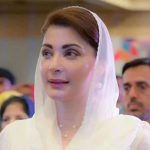Islamabad: The Asian Development Bank (ADB) has maintained its GDP growth forecast for Pakistan at 2.5% for the current fiscal year (FY2025), matching the growth rate of the previous year. The bank’s latest report, the Asian Development Outlook, highlights that while the outlook for Pakistan’s economy remains stable, there are risks that could affect future performance.
The ADB noted that Pakistan has made significant progress in its economic reforms, particularly under the International Monetary Fund’s (IMF) Extended Fund Facility. Key reforms include the nationwide taxation of agricultural income, fiscal consolidation efforts to reduce public debt, and structural reforms aimed at improving the energy sector and fostering overall economic growth.
Read: Fitch affirms progress on Pak’s economic stability, positive outlook for FY25
Despite the stable growth forecast, the ADB emphasized that the government must remain cautious in its macroeconomic policies to avoid potential challenges. The bank warned that any premature easing of economic policies could risk destabilizing Pakistan’s balance of payments, which could threaten the country’s economic recovery. Additionally, the ADB highlighted the importance of maintaining fiscal discipline to avoid increasing government debt, which could potentially raise borrowing costs and affect exchange rate stability.
The ADB’s report also pointed to the positive momentum in business confidence and private sector activity, which could help support growth in the coming months. However, the bank stressed that external factors such as global food and commodity price fluctuations, and potential changes in global trade policies, remain important considerations for the future.
Read: Mineral reserves could free Pak from IMF dependence: PM Sharif
Overall, while risks remain, the ADB’s outlook reflects Pakistan’s ongoing efforts to stabilize and reform its economy. The government continues to work on initiatives aimed at fostering long-term growth and addressing structural challenges in the economy.








